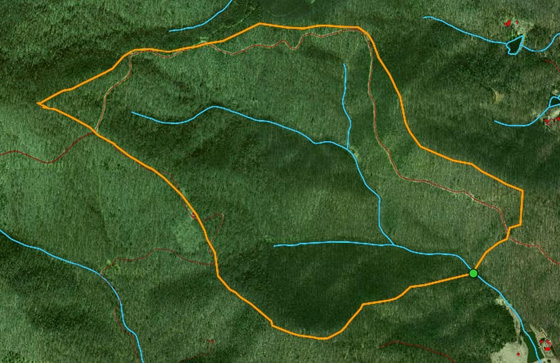Stream health is closely related to land use. Rural landscapes with lots of forest have healthy streams. Urban areas have unhealthy streams. In between, health declines predictably as land use intensifies.
We use the term land use to refer to landscape features such as forest, open land, and developed areas.
We use the term stream health to refer to the variety and balance of organisms living in the stream. To see how stream communities decline with increasing land use, see Losing Life. Click here for more information about stream health.
Case Studies
The three watersheds outlined below have very different land use, and very different stream health. To the west is a fully forested watershed with no houses or paved roads, and with excellent stream health. To the east are two watersheds close to town, with poorer health. Scroll down for close-ups of the three basins.

This pristine watershed in western Albemarle has no land disturbance other than a small gravel road. Landscapes such as these are rare, as are the exceptionally healthy streams they harbor.

The watershed west of the airport is classified as exurban. It is about 50% forested, and has about 3% impervious cover. Stream health is fair. The watershed straddling Route 29 is classified as urban. Like its neighbor, it is about 50% forested. However, it has a lot more impervious cover (17%). Stream health is poor.
